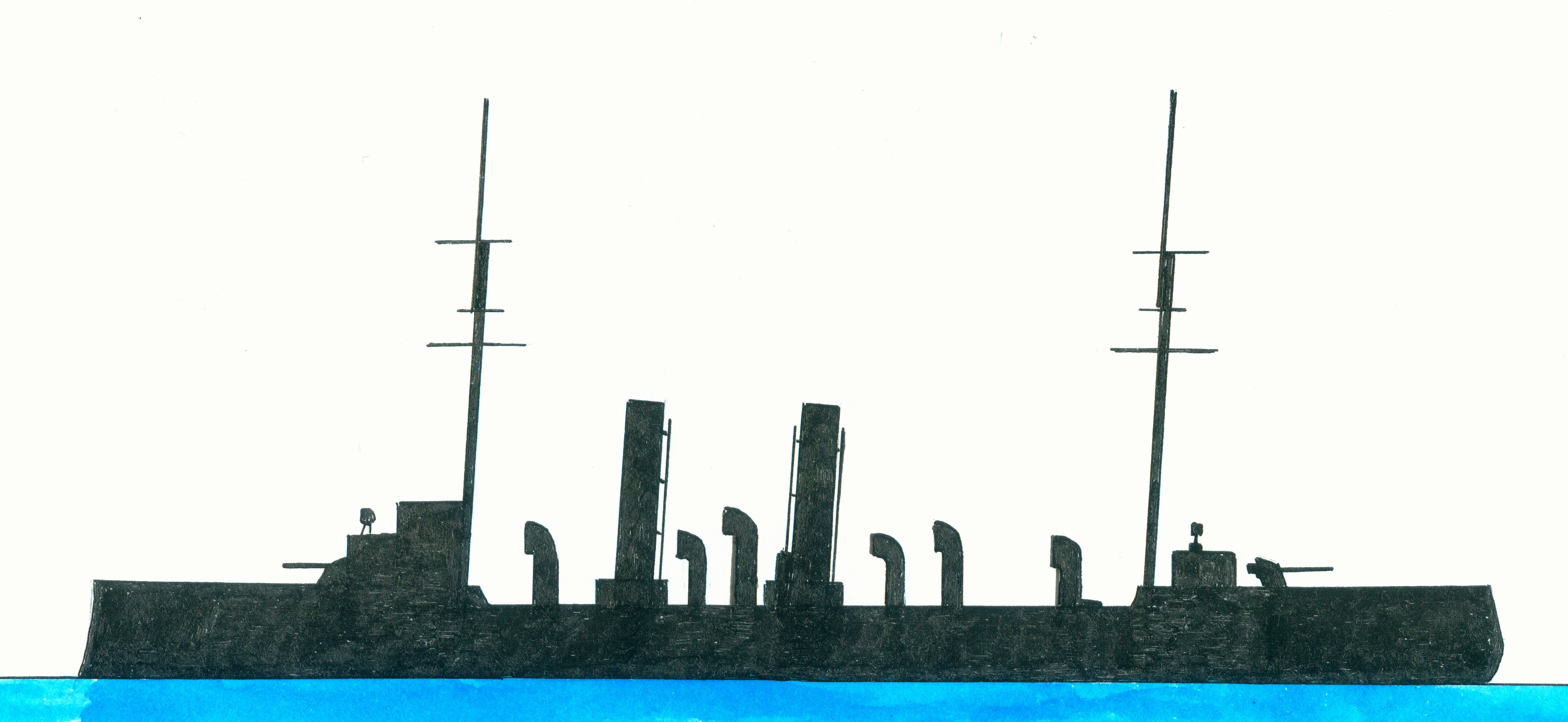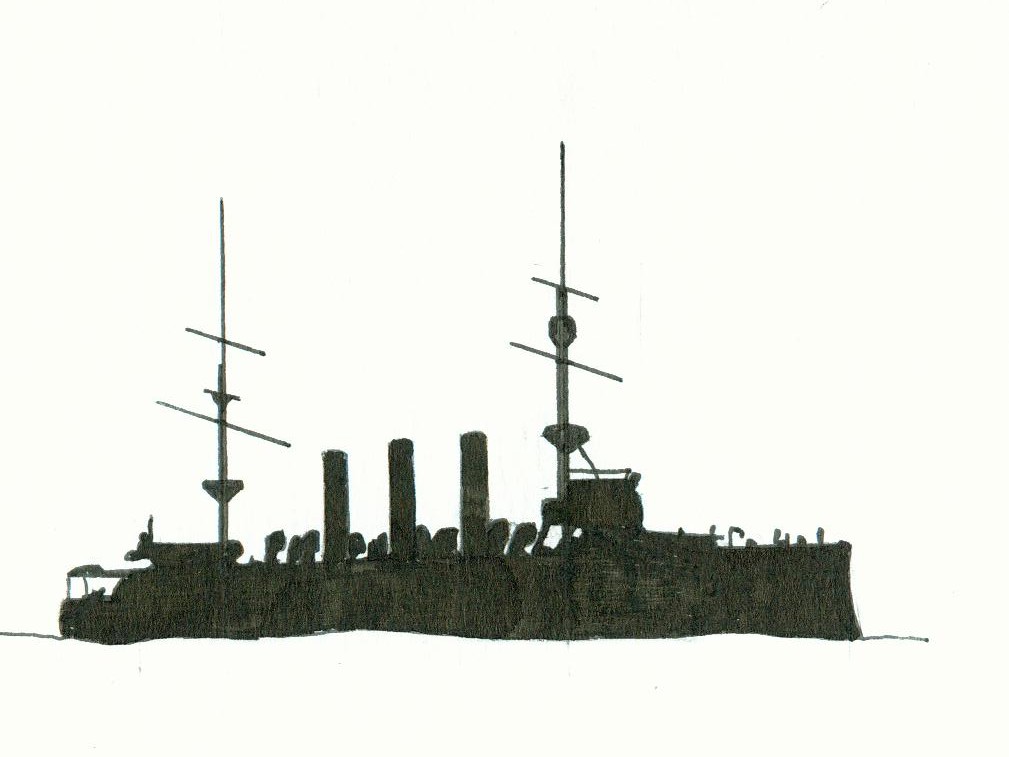Pelorus-class
HMS Hyacinth of the Highflyer-class
Laid down at the Chatham Dockyard, England on 16 December 1897, launched by Miss Andoe on 28 June 1899, completed on 23 January 1900, laid up in reserve, commissioned on 10 July 1900, decommissioned on 29 November 192, handed over to Australia on 29 November 1912, commissioned as a tender to Graden Island naval base on 1 March 1913, refitted in second part of 1913, training ship for reservists since 1 January 1914, served in German East Africa [Zanzibar] 1915-1916, decommissioned on 7 November 1916, became an accommodation vessel in 1922, transferred to the Cockatoo Island Dockyard to be scrapped in May 1923, handed over to the Commonwealth Shipping Board in 1924, being hulked sold to H.P. Stacey, Sydney, Australia in 1926 and finally scuttled off Sydney Heads, Australia on 18 February 1931. Wreck still exists.Of the Pelorus-class designed by chief constructor of the British Royal Navy Sir William White (2 February 1845 Plymouth, England-27 February 1913 London, England)consisting of the Pactolus, Pandora, Pegasus, Pelorus, Perseus, Pioneer, Pomone, Prometheus, Proserpine, Psyche and Pyramus, preceded by the Arrogant-class and succeeded by the Highflyer-class.
Displacement of 2.169 tons and as dimensions 91,4 (between perpendiculars)-95,6 (over all) x 11,1 x 4,9 metres or 300’-313’6” x 36’6” x 16’. Machinery consisted of 2 shafts inverted 3-cylinder triple expansion steam engines and 16 water-tube boilers delivering 7.000 ihp allowing a speed of 19,15-20 (design) knots. Crew numbered 188-224 (originally) men. Armour consisted of a 3,8/1.5”05,1cm/2” thick deck while the conning tower was protected by 7,6cm/3” thick armour. The armament consisted of 8x1-10,2cm/4” quick firing guns, 8x1-4,7cm/3pd quick firing guns, 2 field guns, 3 Maxim machineguns and 2x1-45cm/18” torpedo tubes.


